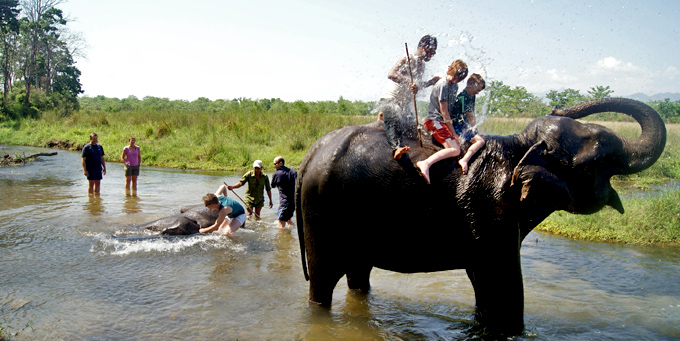Nepal is a small country of 150,000 km² wedged between two giants, China to the north and India to the south. It lies on the southern slopes of the Himalayas, in a narrow strip 845km long from west to east and 145 to 240km wide from south to north.
Altitudes range from 60m in the southern Terai to 8848m (Mount Everest), the roof of the world. This enormous difference in altitude results in a huge diversity of landscapes, climates and, consequently, flora and fauna.
Nepal boasts eight peaks over 8,000m in altitude: Everest, Kangchenjung, Lhotse, Makalu, Cho Oyu, Daulaghiri, Manaslu and Annapurna, and the country also boasts no fewer than a hundred peaks over 7000m!
Altitude is therefore an essential climatic factor. In the high Himalayas, temperatures remain cold all year round, but eternal snow never falls below 5,000m.
All climates are present in Nepal: polar in the high mountains, temperate on the plateaus and in the Kathmandu valley, and tropical in the Terai. The country is subject to a 3-month monsoon from June to August. The best times to visit Nepal are therefore pre-monsoon (March to May) and post-monsoon (October to December).

Fauna
Nepal is home to a huge variety of mammals, birds and reptiles. Tigers, elephants and rhinos live in the wetlands of the Terai. Goats, bharals, blue sheep, yaks and, more rarely, bears and snow leopards inhabit the mountain areas.
FlOre
There are over 6,000 species of trees and wildflowers in Nepal. Tropical forests grow up to 2000m, then give way to rhododendron and deciduous forests up to 3000m, and finally to pine, oak and fir forests up to 4000m. Beyond that, only sparse vegetation remains.

